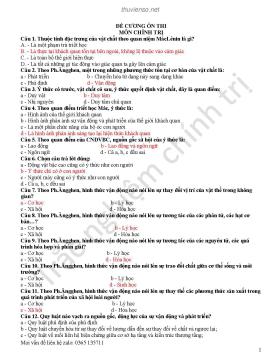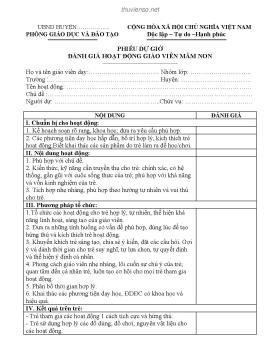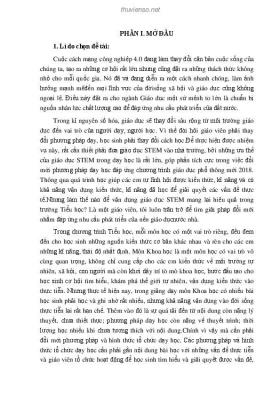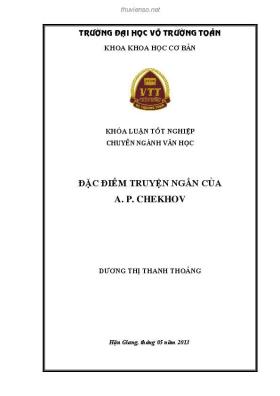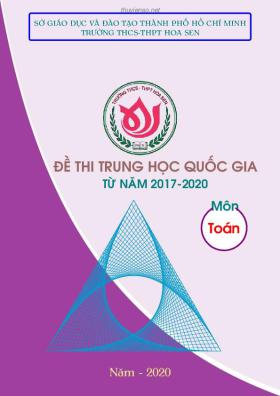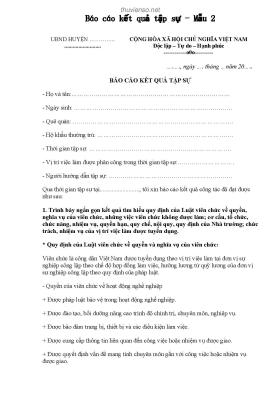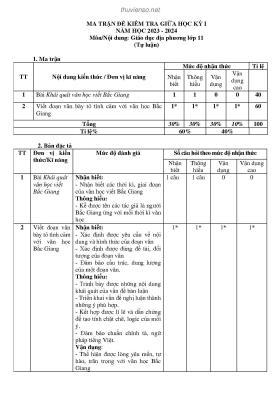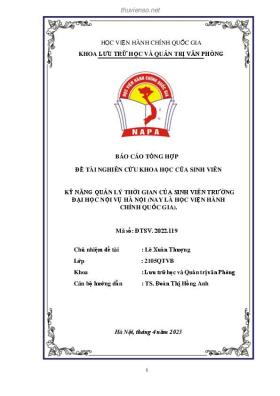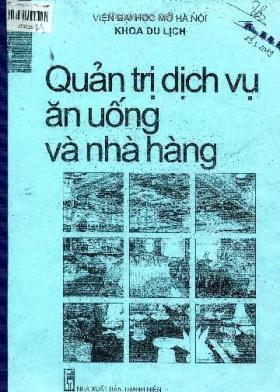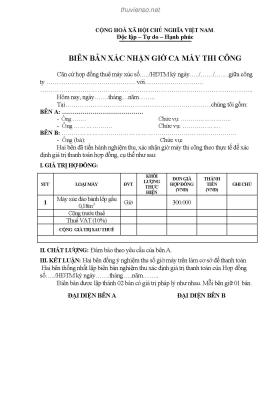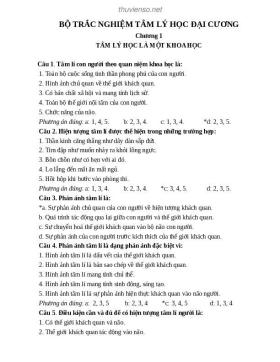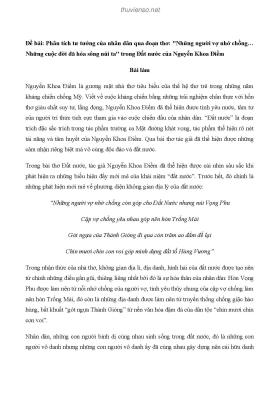
Giáo trình Translation 1 và 2
Thông tin tài liệu:
Nội dung trích xuất từ tài liệu:
Giáo trình Translation 1 và 2 HUE UNIVERSITY COLLEGE OF FOREIGN LANGUAGES DEPARTMENT OF ENGLISH ------***------ NGUYEN VAN TUAN TRANSLATION 1&2 HUE - 2006 1 INTRODUCTION An increasing number of universities in Vietnam have added courses in translation to their curricula; however, the textbooks available for such courses are few. This unit has been written with these courses in mind. The unit is designed to provide the learners with some basic principles of translation which will be generally useful to translation courses in universities and colleges, to help the learners avoid some errors they may encounter when they translate a text, to provide the learners with essential English sentence patterns that could be very useful for the learners in learning and practicing translating and to provide the learners 20 assignments related to the theory they have learned. The desire of the author is to make available the principles of translation which have learned through personal experience in translation and teaching translation, and through interaction with colleagues involved in translation projects in many universities in Central Vietnam. Since it is assumed that the students will be speakers of Vietnamese language, many of these exercises involve translating from or into their mother tongue. The material is presented in a way that it can be used in a self-teaching situation or in a classroom. An attempt has been made to keep technical terms to a minimum. When technical vocabulary is used, every effort is made to clarify the meaning of such vocabulary or to provide its meaning in Vietnamese. This has been done so that the unit can be used by any student translator, even though his exposure to linguistic and translation theory has been minimal. This is an introductory unit. The lessons give an overview presenting the fundamental principles of translation and the rest of the unit illustrates these principles. The overriding principle is that translation is meaning-based rather than form-based. Once the learner has identified the meaning of the source text, his goal is to express that same meaning in the receptor/target language. Many examples of cross-language equivalence are used to illustrate this principle. Since the coursebook has been written for the students to learn either by themselves in their distant learning course or in class with a teacher, there will be a coursebook and 20 assignments. By the end of the course, the students will be able to: 1. obtain general knowledge of the principles of translation . 2. get familiar with and effectively use the English sentence patterns in their translations. On the completion of this coursebook, I would like to express my deep gratitude to Dr. Ton Nu Nhu Huong for her encouragement. I would also like to be grateful to Dr. Tran Van Phuoc and other colleagues of the College of Foreign Languages and the English Department for their kind help. Errors are unavoidable in this coursebook. Therefore, I appreciate and welcome any criticism on the course book. Hue, June 24th, 2001 Nguyen Van Tuan 2 CHAPTER 1: THEORY OF TRANSLATION FORM AND MEANING LESSON 1: 1.What is translation? 1.1. Translation is the expression in another language (target language) of what has been expressed in one language (source language), preserving semantic and stylistic equivalencies. (By Roger T. Bell). 1.2. Translation is the replacement of a representation of a text in one language by a representation of an equivalent text in a second language. (By Roger T. Bell). The author continues and makes the problems of equivalence very plain: Texts in different languages can be equivalent in different degrees (fully or partially different), in respect of different levels of presentation (in respect of context, of semantics, of grammar, of lexis, etc.) and at different ranks (word-for-word, phrase-for-phrase, sentence- for-sentence). However, languages are different from each other; they are different in form having different codes and rules regulating the construction of grammatical stretches of language and these forms have different meanings. To shift from one language to another is, by definition, to change the forms. Also, the contrasting forms convey meanings which cannot but fail to coincide totally; there is no absolute synonym between words in the same language, why should anyone be surprised to discover a lack synonym between languages. Something is always „lost‟ (or might one suggest „gain‟?) in the process and translators can find themselves being accused of reproducing only part of the original a ...
Tìm kiếm theo từ khóa liên quan:
Giáo trình môn tiếng Anh Giáo trình tiếng Anh chuyên ngành Tài liệu tiếng Anh chuyên ngành Giáo trình tiếng Anh kinh tế Tiếng Anh thương mạiTài liệu cùng danh mục:
-
2 trang 467 11 0
-
Đề thi thử vào lớp 10 THPT lần 3 môn Tiếng Anh - Trường THPT chuyên Sư phạm
4 trang 466 3 0 -
288 trang 425 0 0
-
Đề thi khảo sát lần 2 có đáp án môn: Tiếng Anh 12 - Mã đề thi 124 (Năm 2015-2016)
9 trang 377 0 0 -
1000 câu trắc nghiệm Tiếng Anh 9
55 trang 304 0 0 -
Ngân hàng câu hỏi trắc nghiệm Tiếng Anh: Phần 2
276 trang 273 0 0 -
Đề cương ôn tập môn tiếng Anh lớp 10 - Trần Ái
24 trang 269 0 0 -
Nâng cao chất lượng sinh hoạt chuyên môn của bộ môn tại khoa tiếng Anh, Học viện Khoa học Quân sự
6 trang 248 0 0 -
Một số cụm từ viết tắt thông dụng nhất trong tiếng Anh
3 trang 241 0 0 -
Giáo án English 12: Unit 3 - Ways of socialising
7 trang 227 0 0
Tài liệu mới:
-
Khảo sát tình trạng dinh dưỡng trước mổ ở người bệnh ung thư đại trực tràng
9 trang 20 0 0 -
94 trang 18 0 0
-
Tham vấn Thanh thiếu niên - ĐH Mở Bán công TP Hồ Chí Minh
276 trang 19 0 0 -
Kết hợp luân phiên sóng T và biến thiên nhịp tim trong tiên lượng bệnh nhân suy tim
10 trang 18 0 0 -
Đề thi giữa học kì 1 môn Ngữ văn lớp 9 năm 2024-2025 có đáp án - Trường THCS Nguyễn Trãi, Thanh Khê
14 trang 20 0 0 -
Đánh giá hiệu quả giải pháp phát triển thể chất cho sinh viên Trường Đại học Kiến trúc Hà Nội
8 trang 18 0 0 -
Tỉ lệ và các yếu tố liên quan đoạn chi dưới ở bệnh nhân đái tháo đường có loét chân
11 trang 19 0 0 -
39 trang 18 0 0
-
Đề thi học kì 1 môn Tiếng Anh lớp 6 năm 2024-2025 có đáp án - Trường TH&THCS Quang Trung, Hội An
6 trang 18 1 0 -
Tôm ram lá chanh vừa nhanh vừa dễRất dễ làm, nhanh gọn mà lại ngon. Nhà mình
7 trang 18 0 0


